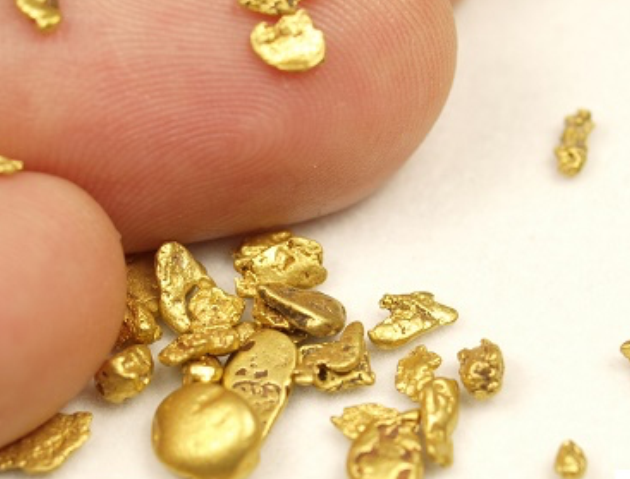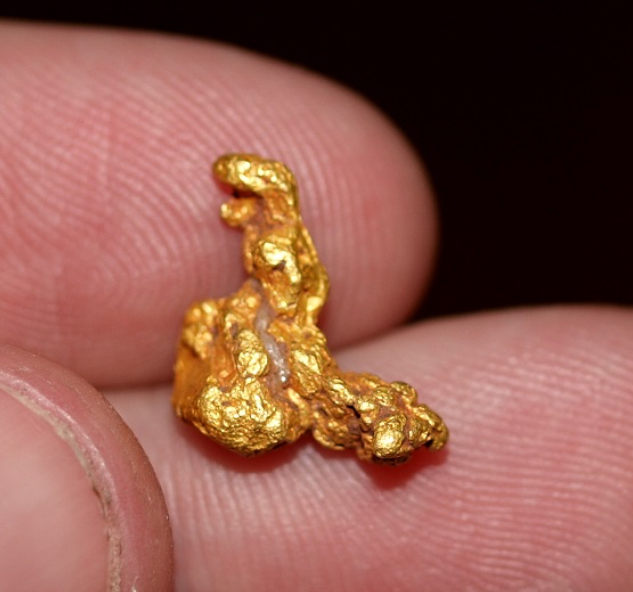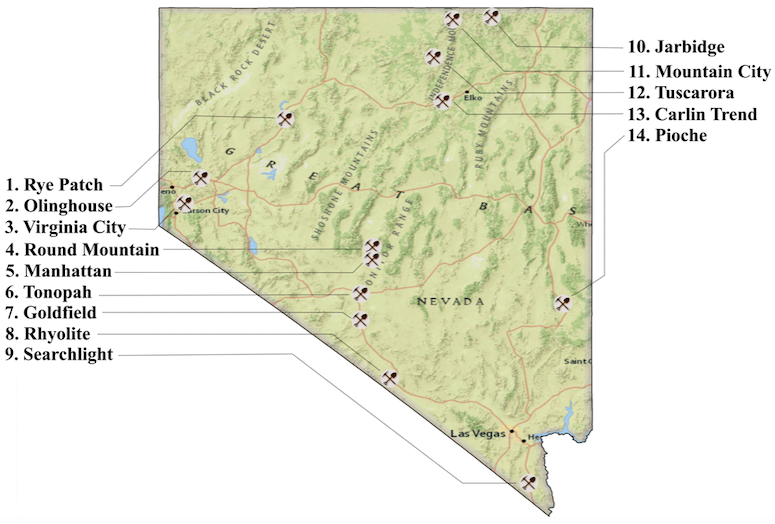
Nevada is a very sparsely populated state; the climate is harsh with extremely hot summers and cold winters. Water is hard to find, the roads are rough, and snakes, cactus, and mountains lions abound. If you’re going to prospect in Nevada be cautious and come very well prepared. Having said that, Nevada is full of gold and you’re likely to have some success here.
There a couple of things to remember when prospecting in Nevada. Since Nevada is known as “The Silver State” obviously it offers more than gold. There could be ores that produce both silver and gold. If you find something metal don’t pitch it until you’re absolutely sure what it is, since a lot of Nevada gold is in the form of a gold/silver alloy called Electrum, and it is a duller gold color.
Nevada is the top gold producing state in the nation. Although gold was first discovered near Gold Canyon, close to Virginia City, it was the later discovery in 1961 that put Nevada in it’s present #1 position.
The low grade deposits were found by the Newmont Mining Corporation in 1961, and are known as the Carlin Trend deposits. These low grade ores are more valuable than any other mineral resource in the United States.
Where to Prospect in Nevada
Nevada is a big state with a lot of public land and provides a great opportunity for the prospector.
Every county in the state of Nevada has gold, but much of the gold is so fine that extraction is not feasible for the hobbyist. Better to stick to areas that produce larger sized gold that can be extracted using techniques such as metal detecting, dry washing and panning.
It should be noted that Nevada is an extremely dry state, and a great deal of the prospecting is done with equipment that needs no water, such as drywashers and metal detectors. Nevada is not the place for suction dredges and sluice boxes.
One of the very best areas to mine in Nevada is in Pershing County. Dry washers were used by the early miners, but today metal detectors are successful in locating nuggets. Rye Patch Placers has produced quite a bit of gold since it was discovered in 1938. Seven Troughs, Rabbit Hole, Sawtooth and Placerites are popular with metal detectorists as the gold is only a few feet from the surface on the bedrock.
A couple of other good areas are Willow Creek and Dun Glen. A lot of the gold here is from lode mines. It would also be worth your time to try the Rochester, Sierra, Unionville and Humboldt Districts. This county is so gold-rich that there is almost guaranteed to be a lot of gold left in the ground.

Also Read: Best Places to Metal Detect in Nevada
There are plenty of opportunities in White Pine County, and exploration there has been limited due to the remote areas and harsh climate. Bald Mountain District is located in the northwest part of the county and some good sized nuggets have been found there. The Osceola District has been heavily mined hydraulically in Dry Gulch, and there is lode and placer gold near Ely, Nevada.
Another particularly rich area is Nye County. The Round Mountain Gold Mine, which is one of the largest gold mines in the country is located here, and there are many gold districts scattered throughout the county. Once again, lack of water limits retrieval and in the early days most of the mining was done with drywashers.
Plenty of gold here comes from lode mines, and some rich districts are Bullfrog, Johnnie, Tybo, Tonopah, Manhattan and Jackson. Other districts have produced not only gold but silver as well.
Humboldt County in the northern part of the state produces very large nuggets. Old drywash spots can be metal detected productively as drywashing lost a lot of gold nuggets. Some noteworth areas: Dutch Flats, Varyville, Rebel Creek, Winnemucca, Gold Run, Awakening, Paradise Valley and Warm Springs Districts.
Elko County, in the eastern part of the state, has many mining districts producing both gold and silver. The northern part of the county, which is close to the Idaho border, contains the richest prospecting areas. Check out the Alder District by Wildhorse Reservoir; Sheridan and Columbia Creeks in the Aura District; Badger Creek, 76 Creek and the Bruneau River in the Charleston District of the Jarbidge Range; Coleman and Hammond Canyons; Van Duzer District near Mountain City; and many other districts scatttered all through the county. Lode mining produces the most gold in the county.

Also Read: Metal Detecting for Gold Nuggets in Arizona
Some other areas to check out
Battle Mountain District in Lander County has produced some big nuggets near the surface, so this is a good area to metal detect. Also investigate Bullion, New Pass, Reese River and Mud Springs Districts and watch for silver ore as well.
The Carlin Mine is one of the richest gold mines in the country and is located in Eureka County in the Tuscarora Mountains. Check out Eureka, Buckhorn and Maggie Creek Districts, as well as Lynn District, where the Carlin Mine is located.
The name of Mineral County leaves no doubt that it has been a rich producer. Most gold has come from lode deposits and as a silver mine byproduct. Investigate Candelaria, Gold Range, Garfield, Hawthorne and Aurora Districts, as they were all worked in the past.
Esmeralda County offers the Goldfield District south of Tonopah, which has produced lode deposits worth several million ounces of gold. Although a lot of the gold came from lodes. the Chinese worked some placers in the 1870s in the Klondyke, Sylvania, Silver Peak, Divide, Tule Canyon and Tokop areas.
Clark and Lincoln Counties in the southern corner of the state have less to offer than the northern and central areas, but gold has been found. Although most of the gold has been a silver mine byproduct, there is a little placering done in the Eagle Valley District.
The Searchlight and Eldorado Districts in Clark County are worth a look, and the Delamar Mine in Lincoln County is a lode mine that is very productive.
There are several smaller counties around the Carson City and Reno areas that are worth looking at. The very famous Comstock Lode, producing incredible amounts of both gold and silver is located in Storey County. It is widely accepted that Lyon County was the site of the first gold discovery in the state, and continues to produce. Douglas County produces smaller amounts of gold than its neighbors, and in Washoe County thousands of ounces of gold came out of the Olinghouse District.
If you find all the gold you can carry, and want to try a little rockhounding for awhile, Nevada has some gorgeous black opals, garnets, sapphires, and turquoise. This state really has a lot going for it!
Next: 5 Popular Gold Prospecting Techniques

